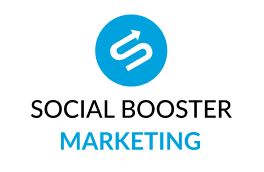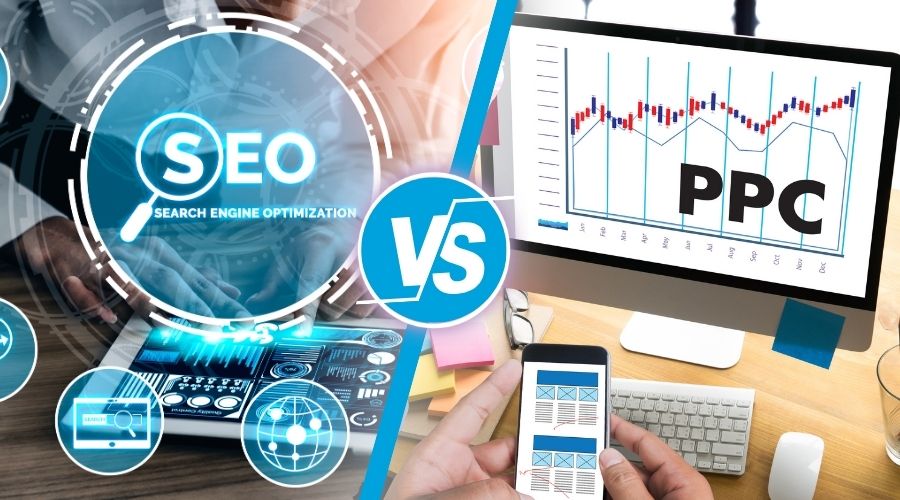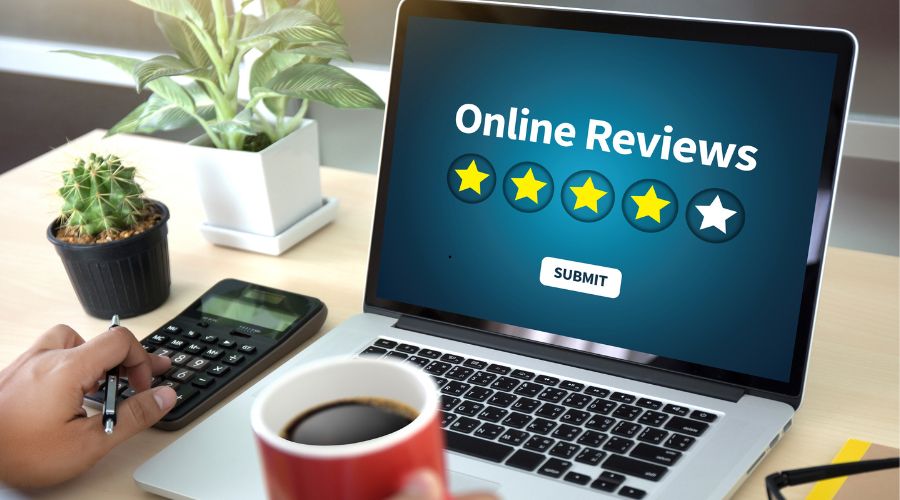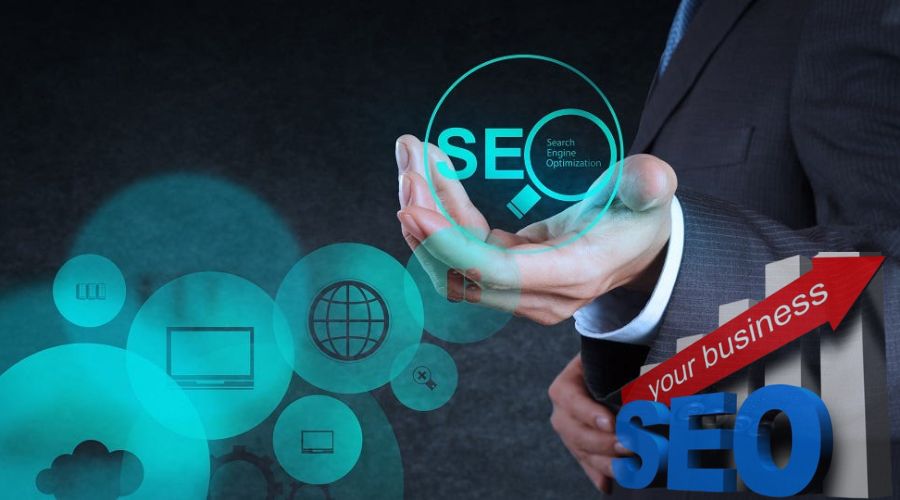When it comes to digital marketing, businesses often find themselves choosing between (Search Engine Optimization) SEO vs PPC (Pay-Per-Click) advertising. Both strategies have their own advantages and challenges, but which one drives better results? This guide breaks down the key differences, benefits, and drawbacks of each to help you make an informed decision.
What is SEO?
SEO is the practice of optimizing your website to rank higher in organic search results. By improving various on-page and off-page elements, businesses can increase their visibility on search engines like Google and Bing without paying for clicks. SEO is a long-term strategy that focuses on content quality, keyword optimization, link-building, and technical improvements.
Pros of SEO:
- Cost-effective: Unlike PPC, organic traffic is free once you achieve higher rankings.
- Long-term benefits: SEO efforts continue to generate traffic and leads even after initial optimizations.
- Increases credibility and trust: Users tend to trust organic listings more than paid ads.
- Encourages a better user experience: Optimized sites improve page speed, mobile-friendliness, and overall usability.

Cons of SEO:
- Time-consuming: Results can take months to materialize, making it a slower strategy.
- Ongoing effort required: SEO requires continuous updates to keep up with algorithm changes.
- Competitive landscape: Ranking against high-authority competitors can be challenging.
What is PPC?
PPC advertising involves paying for ads that appear at the top of search engine results. Advertisers bid on keywords, and each time a user clicks on the ad, they are charged a fee. PPC offers immediate visibility and is highly customizable based on budget and targeting options.
Pros of PPC:
- Instant visibility: Ads appear at the top of search results as soon as the campaign launches.
- Targeted audience: Advertisers can set demographics, locations, and keywords to reach specific users.
- Full budget control: Marketers can adjust spending, pause campaigns, and optimize bids based on performance.
- Measurable results: PPC provides detailed analytics on clicks, conversions, and ROI.

Cons of PPC:
- Requires continuous investment: Once the budget runs out, the traffic stops immediately.
- Higher costs in competitive industries: Bidding on popular keywords can be expensive.
- Less credibility: Users may perceive PPC ads as less trustworthy than organic search results.
- Complex learning curve: Running a successful PPC campaign requires knowledge of platforms like Google Ads and optimization techniques.
Benefits of Combining SEO and PPC Strategies
Instead of choosing between SEO vs PPC, many businesses integrate both for maximum results. Combining these strategies can lead to:
- Increased visibility: SEO vs PPC together ensure your business appears in both organic and paid results, doubling your exposure.
- Better keyword insights: PPC data helps identify high-performing keywords that can enhance SEO strategies.
- Enhanced credibility: Organic rankings build trust, while PPC ensures immediate presence.
- More conversions: Users who see both paid and organic listings for a brand are more likely to convert.
SEO vs PPC: Which Offers Better ROI?
Both SEO and PPC provide returns on investment, but the results differ based on industry, competition, and marketing goals.
- SEO ROI: Although slower, local SEO delivers compounding returns over time, with organic traffic being cost-effective in the long run.
- PPC ROI: PPC delivers quick returns but requires continuous spending to maintain results.
How Long Does It Take for SEO to Show Results Compared to PPC?

One of the biggest differences between SEO and PPC is the time required to see results:
- SEO timeline: It typically takes 3-6 months to see noticeable improvements and over a year for significant rankings.
- PPC timeline: Ads appear instantly, and traffic starts flowing as soon as the campaign is live.
Cost Comparison Between SEO and PPC Advertising
Both SEO and PPC involve costs, but the pricing models differ significantly:
- SEO costs: Investments include content creation, link building, website optimization, and ongoing SEO maintenance.
- PPC costs: Businesses pay per click, and competitive industries often have high CPC rates.
SEO vs. PPC Comparison
SEO vs. PPC: A Quick Comparison
| Feature | SEO | PPC |
|---|---|---|
| Cost | Free (except for labor & tools) | Paid per click (Avg. $ – $$ per click) |
| Speed of Results | Slow (Months) | Immediate |
| Long-term Impact | Sustainable Traffic | Stops When Budget Ends |
| Trust & Credibility | Higher | Lower |
| Control Over Targeting | Limited | Extensive |
| Competition | High for Top Rankings | Can Outbid Competitors |
Top SEO and PPC Tools & How to Use Them
SEO (Search Engine Optimization) and PPC (Pay-Per-Click) are two essential aspects of digital marketing. Here, we will discuss the top tools used in SEO and PPC and how to utilize them effectively.
Top SEO Tools and Their Uses
Google Search Console & GA4
- Monitors website indexing and ranking on Google.
- Helps analyze traffic performance, keyword rankings, and website issues.
Ahrefs
- Best for backlink analysis, keyword research, and content audit.
- Tracks competitor rankings and backlink profiles.
SEMrush
- Excellent tool for on-page and off-page SEO analysis.
- Provides keyword research, backlink tracking, and website traffic insights.
Moz Pro
- Checks Domain Authority (DA) and Page Authority (PA) of websites.
- Helps with keyword research and site audit.
Yoast SEO (For WordPress)
- Optimizes on-page SEO for WordPress websites.
- Helps with meta titles, meta descriptions, and keyword optimization.

Top PPC Tools and Their Uses
Google Ads
- Runs paid ad campaigns on Google and manages keyword bidding.
- Tracks traffic and conversions using Google Ads Analytics.
Microsoft Advertising (Bing Ads)
- Useful for managing paid ad campaigns on Bing and Yahoo.
- Offers lower CPC (Cost Per Click) and better ROI.
SEMrush PPC Toolkit
- Best tool for PPC keyword research, ad copy optimization, and CPC analysis.
- Helps analyze competitor PPC strategies.

SpyFu
- Tracks competitor Google Ads campaigns.
- Extracts top-performing keywords and ad copies.
Google Keyword Planner
- The best tool for PPC keyword research.
- Displays CPC, search volume, and competition level for each keyword.
Which Strategy is Better for Your Business?
The right choice between SEO vs PPC depends on your business goals, budget, and timeline.
- Choose SEO if: You want sustainable, long-term growth and are willing to invest time in optimization.
- Choose PPC if: You need immediate results, have a flexible budget, and want to target specific audiences quickly.
- Use both if: You aim for a well-rounded digital marketing strategy. Many successful businesses leverage PPC for quick wins while building an SEO foundation for long-term growth.
Types of PPC Campaigns & Their Definitions
PPC (Pay-Per-Click) advertising includes various campaign types, each designed for specific marketing goals. Below are the major types of PPC campaigns and their uses:
1. Search Ads Campaign
✅ Definition: These are text-based ads that appear on search engine results pages (SERPs) when users search for specific keywords.
✅ Best For: Businesses looking to capture high-intent users actively searching for products/services.
✅ Example: Google Ads appearing at the top of Google search results when you search “best digital marketing agency.”
2. Display Ads Campaign
✅ Definition: Visual-based ads (images, banners, videos) that appear on websites, mobile apps, and YouTube through the Google Display Network (GDN).
✅ Best For: Brand awareness and reaching a wide audience.
✅ Example: A clothing brand’s banner ad appearing on a news website.
3. Shopping Ads Campaign (Google Shopping)
✅ Definition: Product listing ads that showcase images, prices, and store information at the top of Google Search results.
✅ Best For: E-commerce businesses looking to sell products directly from search results.
✅ Example: A shoe brand displaying its latest collection when someone searches for “Nike running shoes.”
4. Video Ads Campaign
✅ Definition: Video ads that appear before, during, or after YouTube videos. These can be skippable or non-skippable.
✅ Best For: Businesses looking to engage users visually and emotionally with short video promotions.
✅ Example: A 15-second YouTube ad before a music video.
5. App Promotion Campaign
✅ Definition: Ads designed to drive app installs and in-app engagement on Google Play Store, Apple App Store, and mobile devices.
✅ Best For: Mobile app developers and businesses wanting to increase app downloads.
✅ Example: A game app ad appearing on YouTube or Play Store with an “Install Now” button.
6. Remarketing Ads Campaign
✅ Definition: Ads that target users who have already visited your website but didn’t take action (purchase, sign up, etc.).
✅ Best For: Re-engaging potential customers and increasing conversion rates.
✅ Example: Seeing an ad for a product you viewed on Amazon but didn’t buy.
7. Performance Max Campaign
✅ Definition: A fully automated Google Ads campaign that runs across Search, Display, YouTube, Gmail, and Discover using AI.
✅ Best For: Businesses that want to optimize conversions without manually managing multiple campaign types.
✅ Example: A retail store using Performance Max to sell products on multiple platforms.
8. Local Ads Campaign
✅ Definition: Ads designed to drive traffic to physical stores by showing ads based on user location.
✅ Best For: Brick-and-mortar businesses like restaurants, salons, and retail stores.
✅ Example: A nearby coffee shop’s ad appearing on Google Maps when you search “coffee near me.”
9. Discovery Ads Campaign
✅ Definition: Visually engaging ads shown on Google Discover, YouTube Home, and Gmail Promotions tab.
✅ Best For: Brand awareness and reaching users who are interested but not actively searching.
✅ Example: A fashion brand showing product ads in the Gmail Promotions tab.
Key Components of Facebook Ads
Facebook Ads have several important elements that determine their effectiveness. Here are the key points:
1. Campaign Objective
Before running an ad, you must select a goal for your campaign. Facebook offers three main categories:
✅ Awareness – Brand awareness, reach
✅ Consideration – Traffic, engagement, app installs, video views, lead generation, messages
✅ Conversion – Sales, store visits
Example: If you want to increase website visits, choose the Traffic objective.
2. Audience Targeting
Facebook provides advanced targeting options, including:
🎯 Demographics – Age, gender, location, job, education
🎯 Interests – Hobbies, brands, activities
🎯 Behavior – Purchase behavior, device usage
🎯 Custom Audiences – Target past visitors, email lists
🎯 Lookalike Audiences – Find new customers similar to existing ones
Example: A fitness brand can target people interested in “gym workouts” and “healthy eating.”
3. Ad Formats
Different ad types help businesses engage with users effectively:
📌 Image Ads – Single image with text
📌 Video Ads – Short or long-form videos
📌 Carousel Ads – Multiple images/videos in a swipeable format
📌 Slideshow Ads – Lightweight video-style ads using images
📌 Collection Ads – Mobile-only format showcasing multiple products
📌 Instant Experience (Canvas Ads) – Full-screen interactive mobile ads
Example: An e-commerce store can use Carousel Ads to showcase different product styles.
4. Ad Placement
You can choose where your ads appear:
🟢 Facebook Feed – Main newsfeed
🟢 Instagram Feed – Appear on Instagram
🟢 Stories – Full-screen vertical ads
🟢 Facebook Marketplace – Ads in the marketplace section
🟢 Right Column Ads – Shown on desktop
🟢 Audience Network – Displayed in third-party apps
🟢 Messenger Ads – Appear inside Messenger chats
Example: A restaurant ad can appear in Instagram Stories for high engagement.
5. Budget & Bidding Strategy
You can set:
💰 Daily Budget – The max amount spent per day
💰 Lifetime Budget – Total budget for the campaign
💰 Bidding Strategies – Cost-per-click (CPC), cost-per-mille (CPM), cost-per-acquisition (CPA)
Example: A small business can start with a $10/day budget and scale based on results.
6. Ad Copy & Creative
Your headline, description, and CTA (Call-to-Action) must be compelling.
✅ Keep text short & clear
✅ Use high-quality images/videos
✅ Include a strong CTA like “Shop Now” or “Sign Up”
Example: A clothing brand ad might say:
🛍 Headline: “New Summer Collection – 30% Off!”
📝 Description: “Limited-time offer! Grab your favorite styles now.”
🔘 CTA: “Shop Now”
7. Tracking & Optimization
📊 Facebook Pixel – Tracks conversions, user actions on your website
📊 A/B Testing – Test different creatives, audiences, and placements
📊 Ad Insights – Monitor CTR (Click-Through Rate), CPC (Cost Per Click), ROI (Return on Investment)
Example: If one ad creative performs better, you can allocate more budget to it.
Looking for SEO & PPC Services? Contact Us!
SEO and PPC each have their strengths and weaknesses. SEO is a long-term investment that builds credibility and organic traffic, while PPC provides immediate results and precise targeting. Instead of choosing one over the other, consider integrating both strategies to maximize your online presence and drive better results for your business.
📞 Call Us Now: (786) 756-6350
Related Blogs
👉 Key SEO Factors for Effective Website Design
👉 How does local SEO boost your business?








